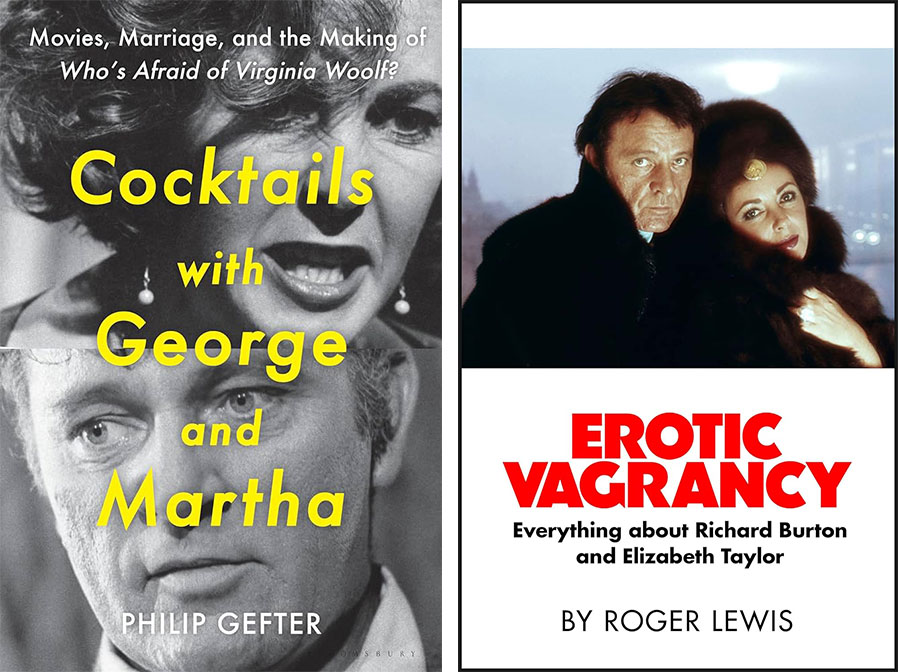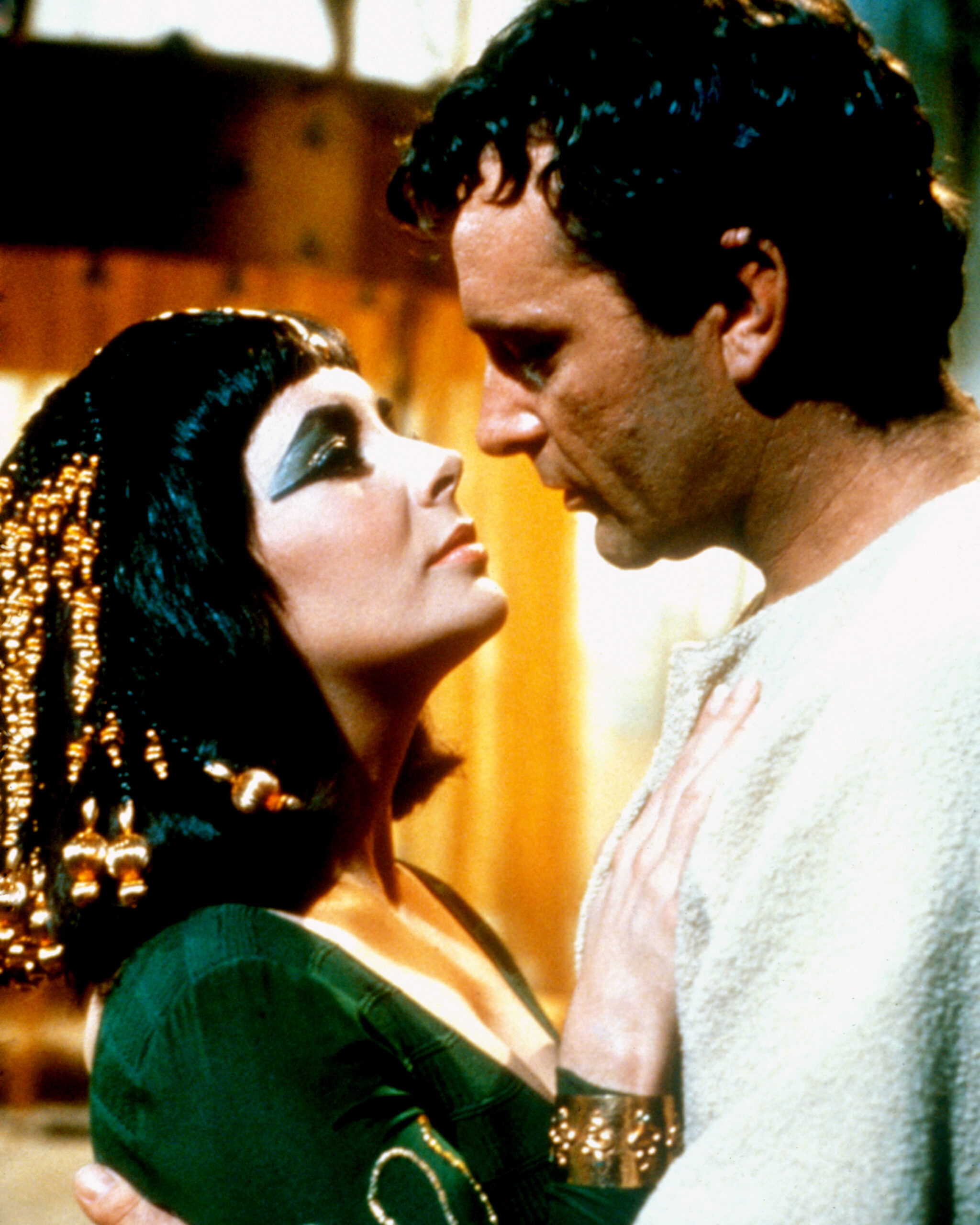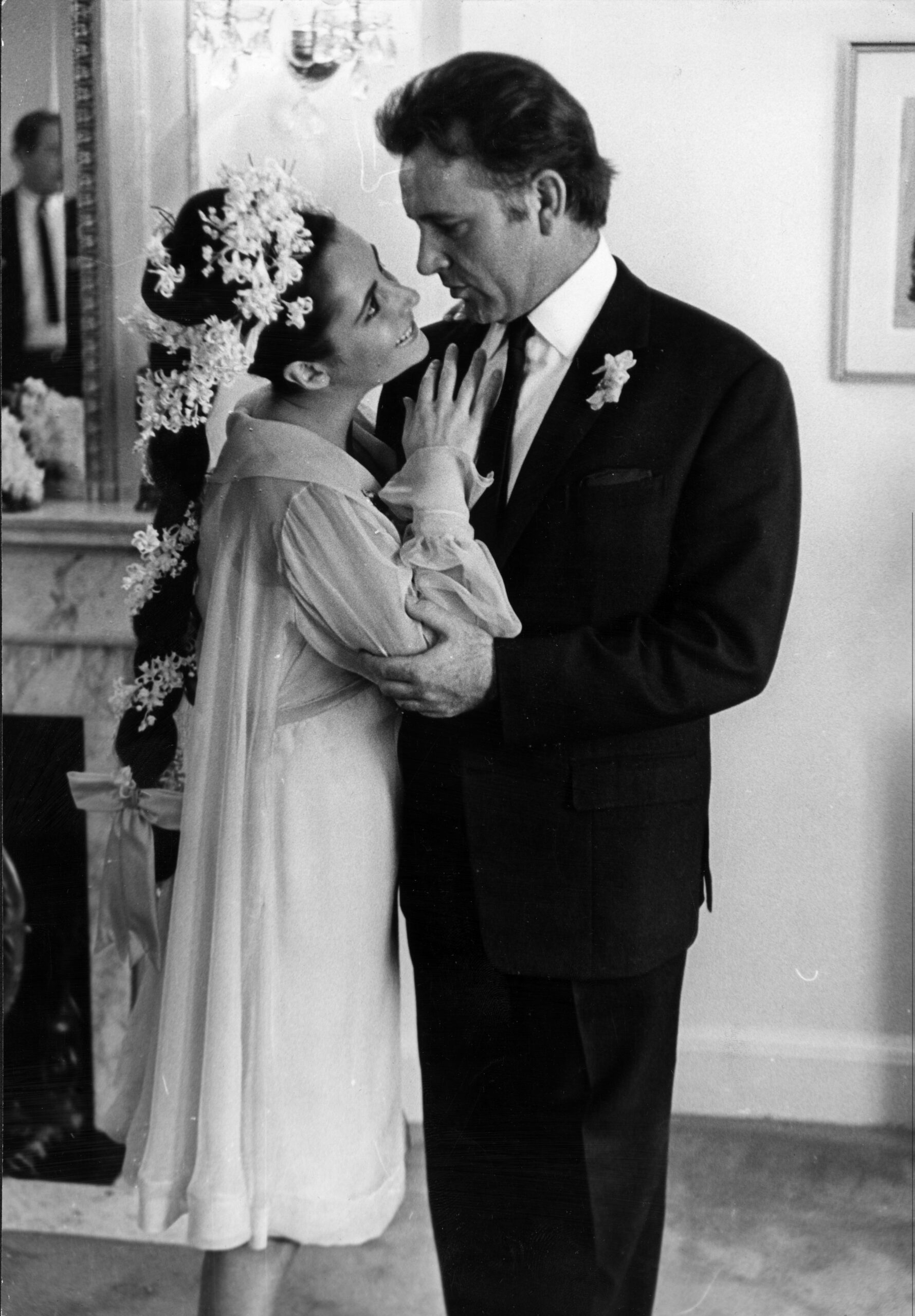Elizabeth Taylor and Richard Burton: 5 Lessons in Love From the Legendary Hollywood Couple

Elizabeth Taylor and Richard Burton on the film set of 'The Sandpiper', 1965. Photo: API/GAMMA/Gamma-Rapho via Getty Images
Elizabeth Taylor and Richard Burton’s jet-set existence at the dawn of modern celebrity culture made them a subject of intense public and tabloid fascination. They are arguably Hollywood’s most enduring and tempestuous model of romance and marriage. Married and divorced twice, it’s been nearly 50 years since their split yet here we are, with two more books that touch on their lives and love affairs.
Why are there so many movies about romance and so few, by comparison, about marriage? That’s one of the questions at the heart of Cocktails with George and Martha: Movies, Marriage, and the Making of Who’s Afraid of Virginia Woolf? by American historian Philip Gefter. Mike Nichols’s Academy Award-winning 1966 adaptation of Edward Albee’s acclaimed stage play famously probes the volatile relationship of a married couple, who were (even more) famously played by real-life spouses Richard Burton and Elizabeth Taylor. Since the fictional characters’ hurtful and rancorous behaviour toward one another is “an incisive investigation of the psychological underpinnings of any marriage,” Gefter naturally also tackles the on-and off-screen antics of the leads Burton and Taylor, newly married at the time, to make the movie together.
Likewise, author Roger Lewis writes “I am perhaps less interested in Burton and Taylor historically and biographically than I am in isolating them culturally, as carnal and fantasy figures, who floated about in a world of child stars, faded grandeur, alcoholism, promiscuity and Lassie” partway through Erotic Vagrancy: Everything About Richard Burton and Elizabeth Taylor. The Welsh critic, known for his biographies of Laurence Olivier and Peter Sellers (which was filmed by HBO), spent 13 obsessive years on the mammoth, 600-page tome.

The couple infamously got together in 1963 in Rome during the making of the epic Cleopatra, and the book borrows its name from a warning published by the Vatican newspaper decrying the couple’s sexual hedonism and extravagant lifestyle: “Where are we all going to end up? In an erotic vagrancy without end or without safe port?” With insight into them as performers and canny cultural context, Lewis’s big bio more than lives up to the promise of the title and belongs on the shelf next to the the ribald Richard Burton Diaries.
Tongue very much in cheek, the arrival of more analysis of Taylor/Burton proves we still have a lot to learn from the “joyously vulgar” pair. Just in time for Valentine’s Day, we glean a few of those lessons.
Don’t Declare Your Love for Someone In Front of Their Spouse
As Gefter writes in Cocktails, Burton lorded his “raw animal spell over Elizabeth and flaunted it sadistically in front of [then-husband Eddie] Fisher.” That includes couples dinner parties on location during Cleopatra, the movie where they began, and paraded, their affair. Fisher allegedly kept a pistol on hand and brandished it on more than one occasion at Taylor.

Don’t Buy Yourself Jewellery
In spite of being the first actress to command a million-dollar salary (for Cleopatra), the legendary Taylor collection of diamonds and rarities that sold in the 2011 Christie’s auction was composed mostly of gifts. As one story goes, among the clandestine couple’s early escapes from the paparazzi in Rome involved ducking into Bulgari, where the actress had been eyeing a diamond and emerald necklace (Burton took the hint, Gefter writes). Taylor apparently expected lavish gifts not only from her paramours but from her producers as well (who plied her with the requisite congratulatory baubles as wrap gifts on Who’s Afraid of Virginia Woolf?).
Dress to Impress Your Suitor
Dress fabulously at every turn, especially if you’re going to leave one man for another. In MGM’s star-studded ensemble, The V.I.P.s (1963), Taylor enlisted Pierre Cardin for her custom wardrobe, playing the unhappily-married wife of a tycoon (Burton), who she tries to leave but runs back to at the last moment. (Taylor would have worn her own impressive jewels on-screen as well but the production couldn’t afford to insure them.) Lewis understands the couple’s notorious feverishness and histrionics well: he notes how the movies they chose to make together reflected their chaotic lives – a traveling circus whose dogs and entourage took over (at enormous expense) entire hotel floors. The couple often drew on real-life circumstance for onscreen roles, particularly the overheated films they made in the 1960s and 1970s (think: Boom! and The Taming of the Shrew). The portrayal of George and Martha’s bawdy messy marriage aside, most of the films were critical disasters in spite of their massive salaries.
Don’t Get Married At Home …
… but don’t call it a destination wedding, either. When Taylor’s divorce from Fisher finally came through in March 1964, she and Burton were in Toronto, as Burton was doing the pre-Broadway run of John Gielgud’s new Hamlet. But because Ontario wouldn’t recognize their Mexican divorces, the couple travelled to Montreal to wed (for the first time). The Shakespearean actor should have paid heed to the date: it was the Ides of March.

Hyperbole Can Be a Love Language
Use hyperbole to needle one another – both for better or for worse. “He is the ocean. He is the sunset. He is such a vast person,” Taylor said of Burton, as Lewis recounts. No sooner uttered, she would then easily call him a “boozed-up, burned-out Welshman.” For his part, Burton dubbed his wife “Miss Tits” and “Bon Apetito.”
Their personal exchanges foreshadowed their tour de force performances in Who’s Afraid of Virginia Woolf? and displayed not only verbal dexterity but quick wit, as Lewis recently demonstrated when he shared his favourite Richard Burton story with The Oldie. Someone in America said to Burton, “Oh, are you Seltic?” to which the thespian replied, “It’s pronounced Celtic, you sunt!”
RELATED:
From “Bennifer” to Taylor and Burton, 14 Famous Couples Who Gave Love a Second Chance
How Salah Bachir Met Elizabeth Taylor, Marlon Brando and Tennessee Williams